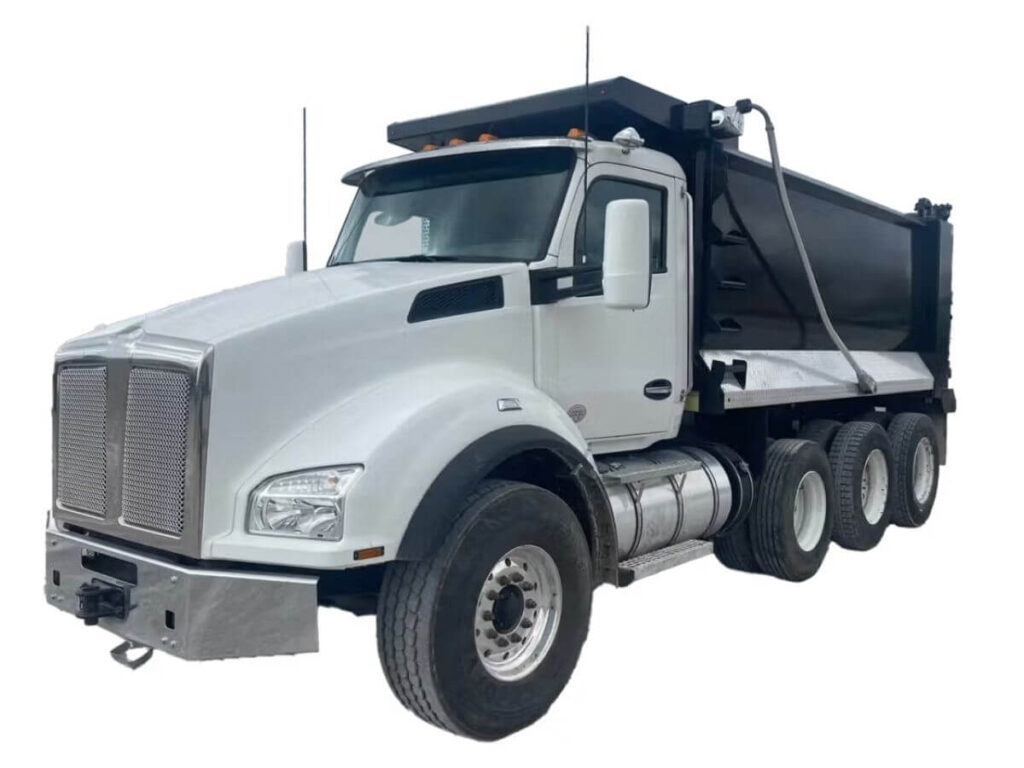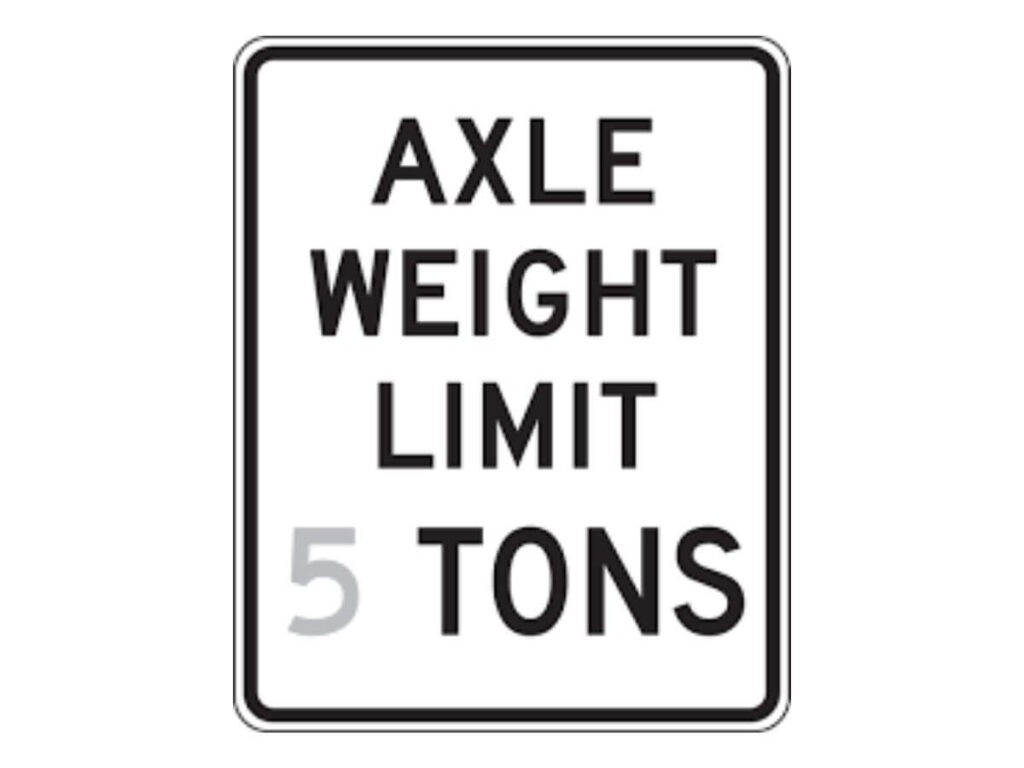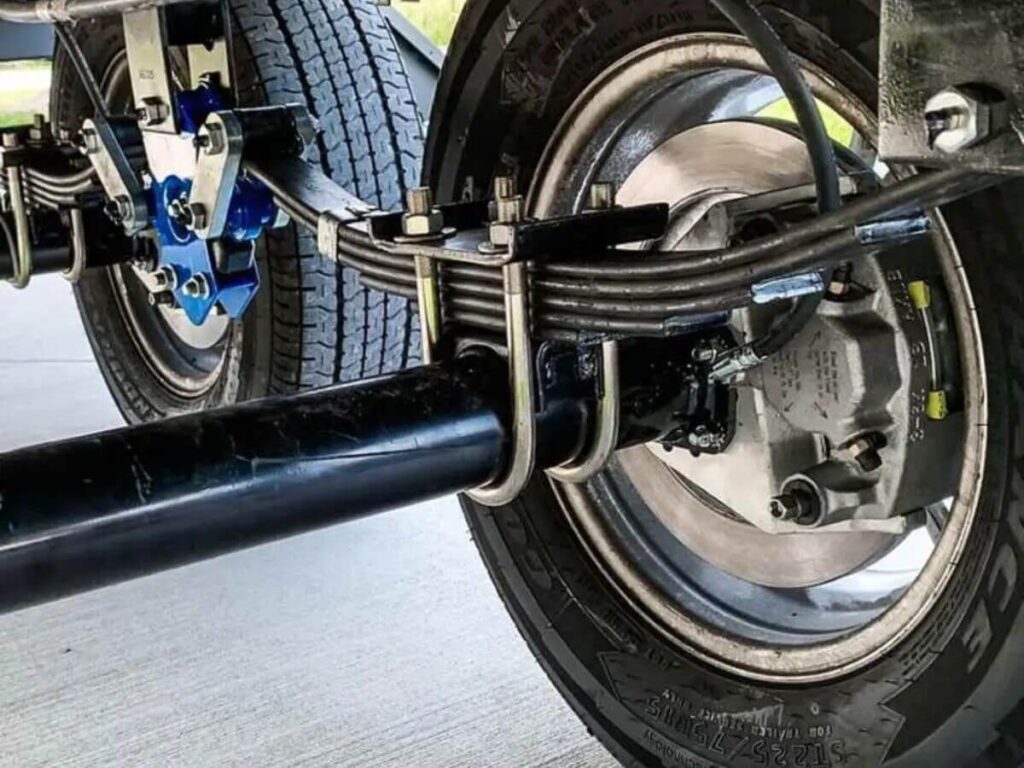One of the first jobs I helped with involved hauling wet clay to a tight construction site. We sent a tandem axle dump truck.
It couldn’t handle the weight. We had to stop, reload, and repeat. Half the day was gone—and so was the client’s patience.
That was years ago. Since then, I’ve worked closely with dump truck buyers, operators, and fleet managers. I’ve learned that choosing between a tri axle and a tandem isn’t just about specs on paper. It’s about matching the truck to the job.
In this guide, you’ll learn:
- Which truck carries more
- Which one costs less to operate
- How they handle turns and tight sites
- What legal limits you need to know
- And which one is better for your kind of work
By the end, you’ll have the info to make the right call—so you don’t end up learning the hard way like I did.
So let’s begin!
Quick Comparison Chart
Before we dive deeper into the decision, here’s a quick side-by-side comparison to give you a snapshot of how tandem and tri axle dump trucks differ.
| Feature | Tandem Dump Truck | Tri Axle Dump Truck |
| Rear Axle Setup | 2 rear axles (1 powered, 1 support) | 3 rear axles (2 powered, 1 lift/tag) |
| Typical Payload | 13–17 tons | 17–22+ tons |
| Turning Radius | Shorter, easier in tight spaces | Wider, needs more room to maneuver |
| Fuel Efficiency | Better for short trips and light loads | Higher fuel use due to added weight |
| Upfront Cost | Lower purchase price | More expensive to buy or finance |
| Maintenance Needs | Fewer parts, lower repair costs | More parts (brakes, tires), higher upkeep |
| Ideal Work Sites | City jobs, gated areas, residential zones | Open construction sites, mining, rural roads |
| Suspension & Brakes | Simpler, easier to service | More advanced, stronger under heavy load |
| Frame Length | Shorter, easier to manage on small sites | Longer, spreads weight better on large loads |
| Best For | Local hauls, flexible jobs, cost-focused operators | Heavy hauling, long-distance, high-volume operations |
| Common Industries | Construction, agriculture, retail, small contractors | Mining, oil & gas, large construction, bulk transport |
1. What Is a Tandem Dump Truck?
I once watched a tandem dump truck back into a narrow job site while a tri axle waited out on the road. That moment stuck with me. It was a clear example of how, sometimes, a smaller, more agile truck can get the job done faster.
Tandem dump trucks are common in jobs where space is tight, loads are moderate, and fuel savings matter.
A tandem dump truck has two axles at the rear.
One is the drive axle, which is powered by the engine. The other is a tag or pusher axle, which isn’t powered but helps support extra weight.
You’ll find these trucks in construction, agriculture, and local transport jobs. They’re valued for their size, lower cost, and easy handling.
How It Works
Here’s how a tandem setup functions:
- The drive axle delivers power to move the truck.
- The tag or pusher axle shares the load but doesn’t receive power.
- Both axles work together to distribute weight evenly, helping the truck carry more without overloading one point.
- The dump body sits on top of the axles and lifts using a hydraulic hoist system, allowing quick and controlled unloading.
This design helps the truck stay within legal weight limits while making the most of its capacity.
Key Features
Reasons many companies choose tandem dump trucks:
- Shorter wheelbase makes it easier to maneuver
- Lower purchase and maintenance costs than larger trucks
- Better fuel efficiency for short routes
- Simpler upkeep with fewer powered axles
If your work involves tight access, short hauls, and medium-weight materials, a tandem may be the right choice.
Typical Use Cases
Tandem dump trucks are often used for hauling:
- Sand
- Gravel
- Topsoil
- Light demolition debris
They’re ideal for:
- Urban construction
- Residential sites
- Road repairs
- Tight delivery yards
They perform well where turning space is limited and load size is moderate.

2. What Is a Tri Axle Dump Truck?
A few years back, I visited a mining site where the ground was soft and uneven. Smaller trucks kept getting stuck or had to make extra trips. Then a tri axle rolled in, dumped its load in one shot, and drove off without issue. That job showed me how important the right axle setup can be—especially for heavy work.
At Rhinotrail, we build and customize tri axle dump trucks specifically for these kinds of demanding jobs. Whether it’s mining, large-scale construction, or long-haul transport, we’ve seen how the right configuration can save time, reduce fuel use, and boost job efficiency.
A tri axle dump truck has three axles at the rear. Usually, it comes with two drive axles—these are powered by the engine and help move the truck. The third is a lift axle (also called a tag axle). It’s not powered but can be raised or lowered depending on the load.
How It Works
Here’s how the tri axle system functions:
- The 2 drive axles deliver power and traction.
- The lift axle can be lowered when carrying heavy loads. It helps spread weight.
- When the truck is empty or needs better turning, the lift axle can be raised.
- The dump body lifts using a hydraulic hoist system, just like in other dump trucks.
- This axle configuration helps the truck meet bridge law rules (legal limits for weight on roads) while still carrying more material per trip.
Key Features
Tri axles are known for:
- Higher payload limits—both legal and actual
- Better stability on rough or uneven ground
- Improved weight distribution
- Stronger frame built for demanding jobs
- More complex axle system, which means more parts to maintain
- Longer wheelbase, which can make tight turns harder
Common Use Cases
You’ll find tri axle dump trucks in jobs like:
- Hauling rock, demo debris, or heavy fill
- Moving bulk materials in mining
- Agricultural loads over long distances
- Transporting pipe, concrete, or machinery in oil and gas
If your jobs are heavy, long, or off-road, a tri axle could make the difference between slow progress and smooth hauling.

3. Payload and Legal Weight Limits
I was chatting with a dump truck owner at a pit stop outside Tulsa. He had just moved from a tandem to a tri axle.
“I used to think more trips just meant more chances to get paid,” he told me, shaking his head. “But man, fuel, time, and wear—that stuff adds up fast.”
I remember thinking, He’s right. Fewer trips means more than just convenience. It changes math.
That stuck with me.
Payload Capacity Comparison
Here’s what you can expect in terms of hauling capacity:
- Tandem dump trucks usually carry 13 to 17 tons
- Tri axles can handle 17 to 22+ tons, depending on spacing and design
But these are general numbers. Your legal capacity depends on where you operate. Different regions have different axle laws, and spacing between axles matters.
At Rhinotrail, we customize each trailer based on your local weight regulations and job requirements. So while your tri axle might technically hold 22 tons, the legal limit might be lower depending on your state’s rules—and we make sure your setup stays compliant without sacrificing performance.
Legal Considerations
Most places follow the Federal Bridge Formula, which sets rules for weight based on axle count and spacing.
Here are a few things to consider:
- Lift axles may not be allowed without a special permit
- Overloading can result in fines, road bans, or higher maintenance costs
- Always check your local DOT rules before planning max loads
Legal limits aren’t just about the law—they affect your costs, routes, and scheduling too.
Practical Impact on Business
Let’s keep it simple:
- If you haul heavy materials often, a tri axle can help cut trips and save fuel
- If you rarely max out loads, a tandem may be more cost-effective
So ask yourself:
- Do your jobs depend on volume?
- Or are you working shorter routes with moderate loads?
The answer helps you choose the truck that makes the most sense—for your work, your budget, and your time.

4. Maneuverability and Turning Radius
The first time I watched a tri axle try to turn into a small jobsite, I knew it was going to be a struggle. The gate was narrow. Traffic was building up. The driver had to back up, pull forward, and try again—twice. I thought, A tandem could’ve made that turn in one shot.
That moment showed me how much turning radius affects real jobs, not just specs on paper.
How Tandem Trucks Handle
Tandem dump trucks are easier to drive in tight areas. They have a shorter wheelbase, which means they can make sharper turns with less effort.
That matters a lot when you’re working in:
- Cities or residential neighborhoods
- Gated entrances or fenced job sites
- Crowded construction zones with limited space
In these situations, tandems feel smoother. The truck responds quicker, and you don’t have to do wide swings just to park or line up with a loader. It’s less stress on the driver—and less time lost on awkward positioning.
How Tri Axles Handle
Tri axles are longer, and that affects how they move. The added axle gives more load capacity, but also makes the truck harder to turn in tight spots.
You’ll feel the difference when:
- Backing into a narrow site
- Turning on small streets
- Trying to get around parked cars or tight corners
That said, tri axles work great when they have room to move. They’re steady on highways, strong on uneven terrain, and better suited for open or rural job sites.
If your work is mostly wide open and off-road, the extra length won’t slow you down. But if you’re in and out of tight areas every day, that extra turning space can be a problem.
So ask yourself—do your jobs give you space, or do they test your turning skills?

5. Key Structural and Functional Differences
A buddy of mine runs a small excavation business. He started with a tandem because it was easier to drive and repair. But as his jobs got bigger, he told me, “I needed something that could handle more without bouncing around or working the brakes too hard.”
He switched to a tri axle and never looked back—for the kind of loads he hauls, the structure made all the difference.
Axle Configuration
Let’s start with the basics.
- A tandem dump truck has two axles in the rear. One is powered by the engine (called the drive axle), and the second is a support axle that helps carry the weight.
- A tri axle dump truck has three rear axles. 2 are drive axles, and the third is a lift or tag axle. The lift axle can be raised or lowered, depending on how much weight you’re carrying.
That extra axle gives tri axles more capacity—but it also adds complexity.
Suspension and Braking Systems
Tri axles come with more suspension parts and stronger braking systems. With two powered axles and heavier loads, they need more stopping power and more shock control.
That makes them great for bigger jobs—but also means more moving parts to service.
Tandems use a simpler setup, which means:
- Fewer parts to maintain
- Lower repair costs
- Faster service times
If you’re doing lighter hauling and care about simplicity, that matters.
Frame and Load Balance
Tri axles usually have a longer frame, which helps spread the load out evenly. This improves stability, especially on rough ground or with heavy materials.
Tandems, on the other hand, have a shorter frame. That makes them better for:
- Smaller sites
- Tighter turns
- Balanced loads on shorter hauls
So, what matters more to you—smooth rides with big loads, or easy handling with faster upkeep?
Understanding the structure helps you match the truck to the way you actually work.

6. Fuel, Maintenance, and Ownership Costs
When you’re choosing between a tandem and a tri axle, cost isn’t just about what you pay up front. It’s about how much that truck costs you every time you start the engine, every time it breaks down, and every time it goes in for service.
You want a truck that fits your work—and your budget.
Upfront Cost Comparison
Tri axle dump trucks cost more to buy. They’re bigger, have more axles, and come with heavier frames and parts. If you’re looking for maximum capacity, that cost might be worth it.
Tandem dump trucks are more affordable. They’re easier to finance, and if you’re renting, they’re usually cheaper. If you’re running a smaller operation or just getting started, a tandem may fit your budget better.
Fuel Consumption
Tri axles are heavier. That means they burn more fuel, especially on short trips or stop-and-go routes. If you’re hauling long distances with heavy loads, this might be expected. But if you’re running short local jobs, it can add up fast.
Tandems use less fuel. Their lighter weight makes them more efficient for lighter loads and frequent stops. If you care about mileage and fuel savings, you’ll notice the difference at the pump.
Maintenance Costs
With more axles and extra components, tri axles have more parts to service. You’ll be dealing with extra tires, more brakes, and more suspension pieces. Maintenance costs will be higher, and repairs might take longer.
Tandems are simpler. Fewer parts mean lower maintenance bills and quicker shop time. If you’re trying to avoid high repair costs, a tandem gives you less to worry about.
Long-Term Value
So, which truck gives you better value?
If your work involves moving heavy loads all day, every day, the tri axle might pay off over time. You’ll make fewer trips and haul more per run.
But if you handle mixed jobs or lighter loads, a tandem might save you more overall. It’s cheaper to buy, uses less fuel, and costs less to maintain.

7. Which To Choose Between Tri Axle and Tandem?
Choosing between a tri axle and a tandem dump truck isn’t just about specs—it’s about your work.
What you haul, where you go, and how often you’re on the road all make a difference. You don’t want to spend more than you need to. But you also don’t want to come up short on the job.
Key Questions to Ask Yourself
Start with the basics. Ask yourself:
- What materials am I hauling most often?
- How heavy are my average loads?
- Do I work in tight job sites or open areas?
- How much time do I spend on the road each day?
- What’s my budget—not just to buy, but to operate and maintain?
These questions help you focus on what matters most in your daily work.
Best Choice by Industry
- Construction: Use a tri axle for hauling rock, demo debris, or bulk materials. Stick in tandem if you’re working at smaller sites or short distances.
- Mining: Go with a tri axle. You’ll need the strength and capacity.
- Agriculture: A tandem works great for local deliveries or light produce. For long hauls or bulk loads, a tri axle gives you more value.
- Oil & Gas: A tri axle is the best fit for equipment, pipes, and heavier cargo.
- Retail or Logistics: A tandem offers flexibility for mixed-purpose jobs.
- Independent Operators: Choose a tandem for its lower cost and versatility. If you specialize in heavy loads, consider investing in a tri axle.
Conclusion
Choosing between a tandem and tri axle doesn’t have to be a gamble. Now you know how they compare—on the job site, on the road, and in your wallet.
That tight downtown job I told you about? The tandem made it in and out, no problem. That was a turning point for me.
You’ve got the info. You’ve got the questions to ask. Now’s the time to act.
So—what kind of jobs are you building your business around?
Contact us today. We’ll walk through it with you.


